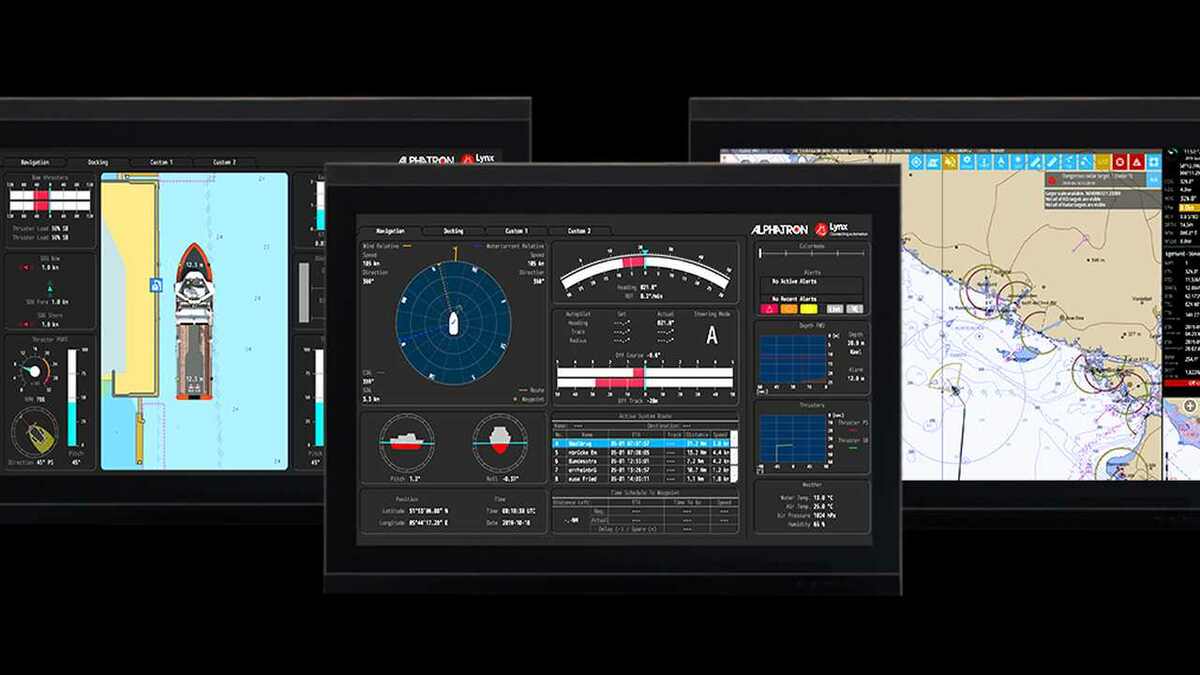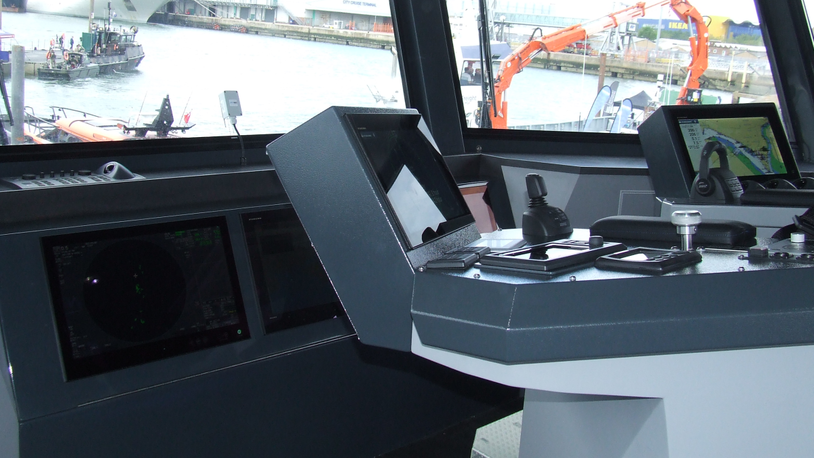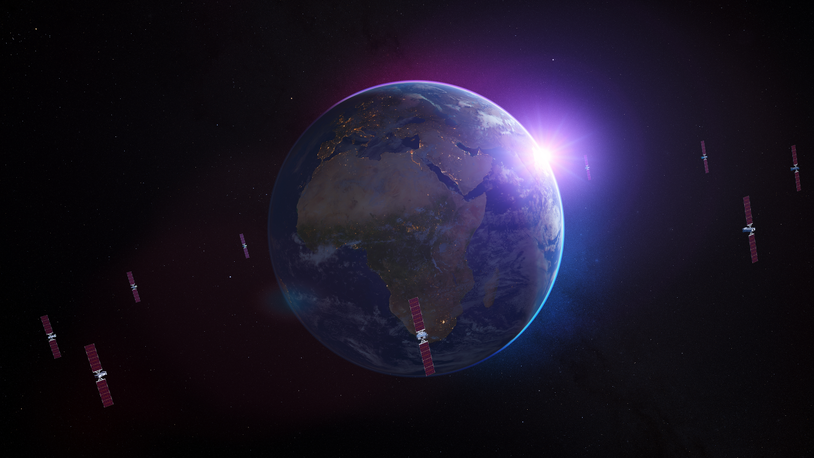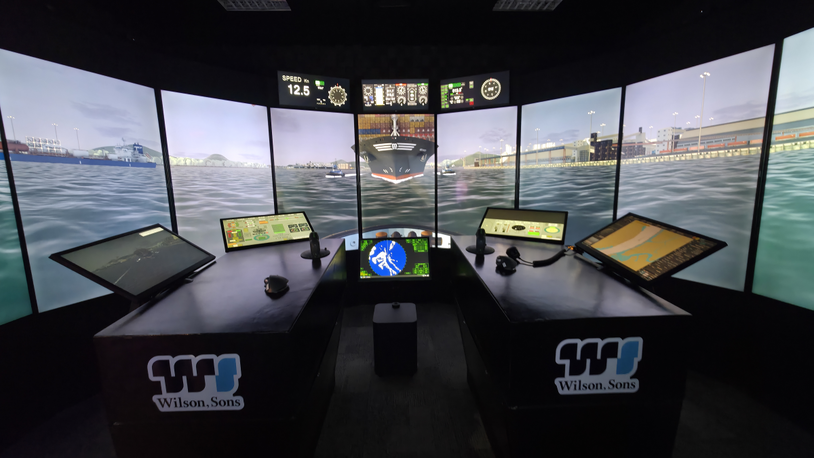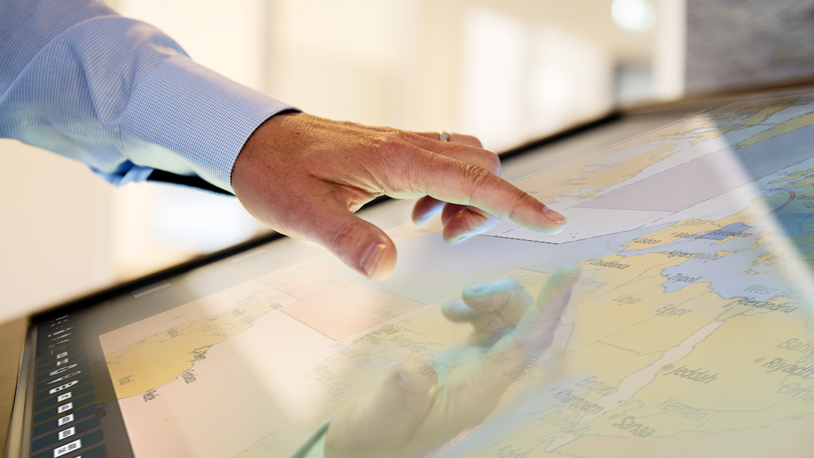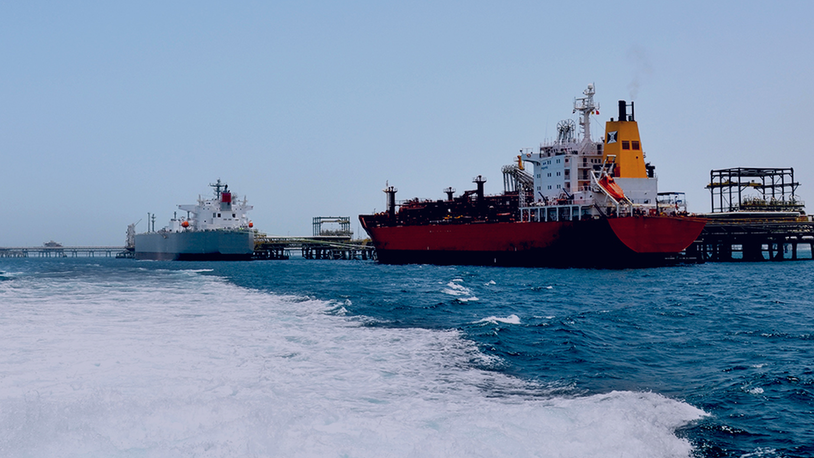Business Sectors
Events
Contents
Smart bridge technology revealed at Europort
Bridge technology was unveiled at the Europort exhibition in Rotterdam, the Netherlands, that could transform ship operations
Japan Radio Co subsidiary Alphatron Marine introduced its Multifunctional Information Navigation & Docking System, Alpha-MINDS, to improve safety during ship berthing and reduce stress on navigators.
Alpha-MINDS uses JRC’s inhouse-developed software platform, Lynx, to deliver advanced docking information to bridge teams.
Graphical displays deliver information as selected add-ons to ECDIS for operational modes such as berthing or dredging operations or passing through busy shipping lanes.
Information is displayed on a 26-in touchscreen on the Alpha-MINDS console. This can include camera images and high accuracy GPS sensors for docking.
A basis for the information display is electronic navigational charts (ENCs) on ECDIS, which can be upgraded with more advanced features.
JRC has also included voyage planning and reporting tool, NeCST, which JRC developed with NYK Lines. This enables bridge teams to:
- Share data with ships and offices via JRC’s J-Cloud.
- Simple route planning with an intuitive user interface.
- Handwrite on an electronic chart and export to ECDIS.
- Overlay weather and meteorological information.
- Easily hand over to the next officer on duty.
- Efficiently brief voyage and onboard tasks.
Other JRC equipment can feed information to Alpha-MINDS, including its JMA-5300 and JMR-5400 radar series. Alphatron said Alpha-MINDS would be suitable for vessels up to 10,000 gt.
Damen Shipyards Group introduced its new human machine interface (HMI) for tugs, offshore support vessels and other workboats. Damen sales manager Joost van der Weiden told Riviera Maritime Media these redesigned graphical user interfaces are included in the latest deliveries of tugs and support vessels to improve the information display for crew.
These HMIs were developed in partnership with VanBerlo, Praxis and Böning for bridge, engine control and switchboard rooms in close consultation with captains and chief engineers.
There are separate displays for vessel navigation, towage operations, engine and thruster controls, tank levels and winch operations which can be chosen depending on which crew member needs them.
Damen has developed an HMI nautical dashboard in the wheelhouse for captains to view heading, speed, fuel consumption and other alarms. There is an HMI technical dashboard for chief engineers that displays information on main engines, generator sets and thrusters.
There is also an HMI indicating information required for deck machinery control and a dashboard displaying vessels systems’ information, such as fuel tank levels, pressures and consumption rates.
Mr van der Weiden said remote monitoring of these operational parameters is also included in its newbuildings. “We can provide reports to owners demonstrating the average fuel consumption and systems temperatures,” he said. “They can then optimise their operations, reducing fuel consumption or change their maintenance requirements.”
Wärtsilä has extended the capabilities of its ECDIS to include integrated voyage planning to further develop its e-navigation technology. This can then be integrated with smart marine technology and ship management to ensure owners can improve their fleet’s efficiency.
Wärtsilä provides smart technologies for remotely monitoring ships and expert insight for owners and shipmanagers. This is a holistic predictive maintenance solution that proactively detects issues, and provides the actionable advice required to solve them.
Alewijnse Marine demonstrated its latest digital platform for managing multiple ship’s systems more easily.
Alewijnse Virtualisation & Visualisation (AIViVi) combines several existing physical hardware and software services into one digital solution.
This was developed in the last 18 months by Alewijnse’s engineers and developers, together with a leading global dredging and offshore construction company.
AIViVi is one graphical user interface for multiple systems on dredgers and offshore vessels. It replaces computers, keyboards, video and mouse equipment and reduces cabling. This also enables a single system to be selected for display on multiple screens around the vessel.
Related to this Story
Events
Offshore Support Journal Conference, Americas 2025
LNG Shipping & Terminals Conference 2025
Vessel Optimisation Webinar Week
© 2024 Riviera Maritime Media Ltd.


